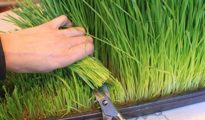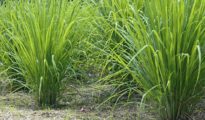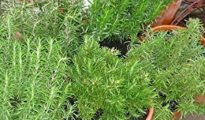If you're a fan of different types of pepper including white, red, and/or black, growing your own peppercorn plant might just be a good idea! After all, indulging in different types of peppercorns can be costly, but it's much cheaper to grow your own! Keep reading to find out how to grow peppercorn plants in your garden with our easy to follow gardening guide!
Choose from black pepper plant, green peppercorns, red or white peppercorns – the options truly are endless! Whichever peppercorn variety you choose the plant, the guide will be the same. The peppercorn plant is native to India and has been used there for thousands of years. In today's day and age, the peppercorn plant is the most commonly traded and used spice in the world. Black pepper, Piper nigrum, can be used to produce white pepper simply by removing the black outer seed coat. Green pepper may be made by harvesting and drying immature black peppercorn seeds.
How to Grow Peppercorn Plant
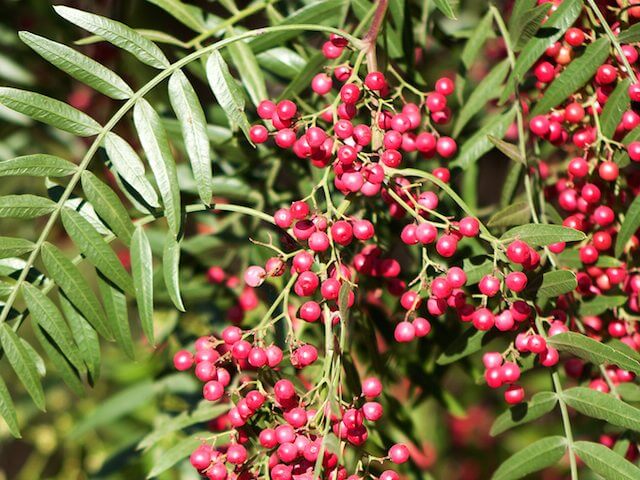
The peppercorn is a tropical plant that is grown for its white, black, and red peppercorns. The three colors of the peppercorn fruit are actually just three different stages at which they are harvested. Black peppercorns are simply dried, immature peppercorns, while white pepper is made from the inner portion of the mature fruit. Green peppercorns appear first, before black peppercorns, and if let on the vine a little longer, will turn red. Think of the different colors of peppercorn as you would bell peppers – they each turn a different color at different stages.
A climbing vine, the peppercorn plant can grow to over 12 feet tall with white blooms in the summer. Keep your peppercorn plant away from cold and dry climates. Black peppercorns require regular and adequate watering if grown outdoors in the United States, USDA zones 10-11. If possible, try to keep your peppercorn plant away from temperatures that go below 60 degrees Fahrenheit (15C). As you may have guessed, peppercorns thrive in tropical regions, so the warmer it is, the better.
Before you plant your black peppercorn seeds, it's important the the soil is warm (between 75-85F) and moist. For best results, be sure to soak your peppercorn seeds for a day or two to promote germination. Sow the seeds just slightly beneath the surface of the soil, about 1/4″ of the way in. While waiting for germination to occur, keep the soil warm and moist. If you live in a USDA zone 10 or lower, you can grow peppercorns in pots or containers. Make sure to overwinter indoors once temperatures dip below 60F.
Growing Peppercorns:
- Peppercorn plants are actually grown by propagation through vegetative cuttings and are grown as vines.
- More often than not, peppercorn plants are grown among shade crop trees such as coffee.
- In order to successfully grow peppercorns, the conditions must be right: high temperatures, heavy and frequent rainfall or watering, and well draining soil.
- Most peppercorns grow in areas such as India and Brazil, where high temperatures and heavy rain are a constant.
- You don't have to live in Brazil or India to grow your own though: you can easily mimic these conditions either in a greenhouse, or if you already live in a warm or tropical climate, or you can grow them at home in a pot!
- There are plenty of nurseries as well as online stores which sell peppercorn plants. Inquire at your local eastblishment, and they will not only provide you with the right variety for your climate, but they'll also give you some helpful pointers!
- Make sure your potted peppercorn plant is situated in a sunny, warm area.
- Humidity must be at 50% or higher.
- Feed your plant moderately with a 10-10-10 fertilizer – about 1/4 teaspoon per gallon of water every one to two weeks.
- During the winter months, feeding should stop.
- Water consistently, but don't over-water, as peppercorn plants are susceptible to root rot.
- Keep the plant under a bright light and warm conditions.
Harvesting Peppercorns:
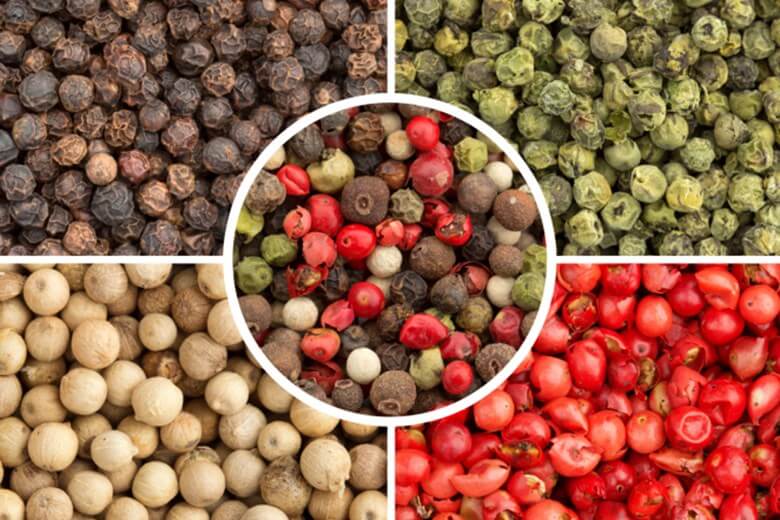
- Be patient – peppercorns can take at least two years until they flower. The flowering vine is beautiful though, and will add a decorative touch to any garden!
- Once you do see them flowering, it means that the peppercorns are ready to harvest and this is the fun part – you can choose to harvest at any stage, and depending on the sage, you'll receive different types of peppercorns with different tastes!
- Green peppercorns will come first. At this stage, the peppercorn is quite immature, but it can be picked! It has a mild peppery flavor and can be dried, frozen, or preserved in brine. Green peppercorn berries go great with steaks or sauces.
- If you decide to harvest red peppercorns, leave them on the vine for a little longer – they will turn from green to red!
- Then, if you leave the red berries on the vine longer, they'll turn into black peppercorns, which most of us are familiar with.
- Lastly, white peppercorns are simply black peppercorns that have had their outer shell peeled. It is much milder than any of the other peppercorns and has a completely different flavor profile.
- So now that you know how to grow peppercorns, it's time to roll up your sleeves and get to planting!

